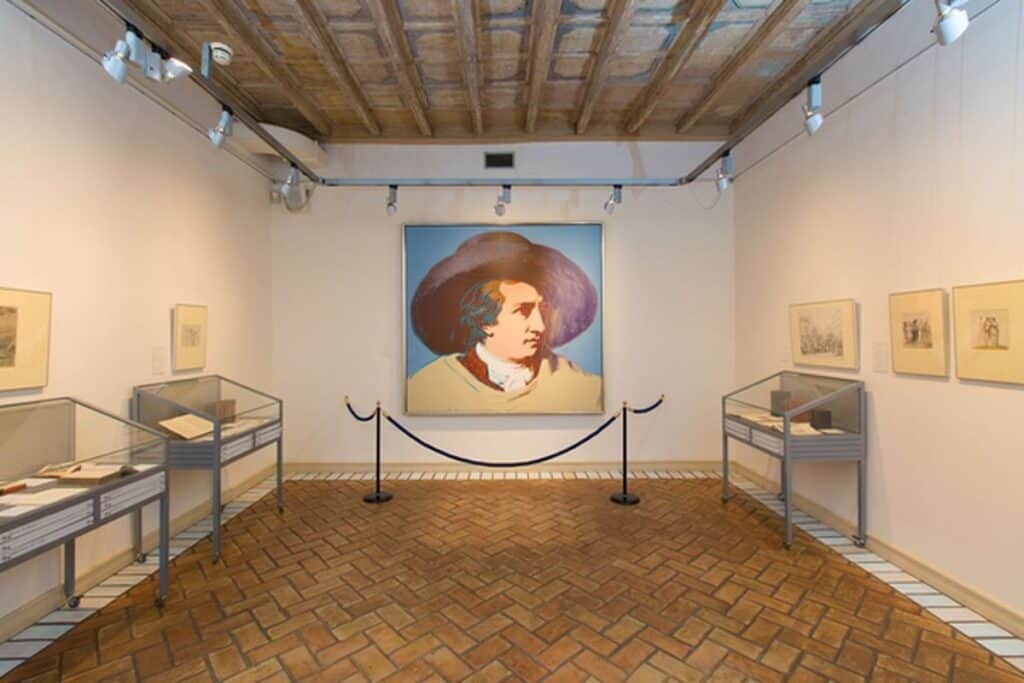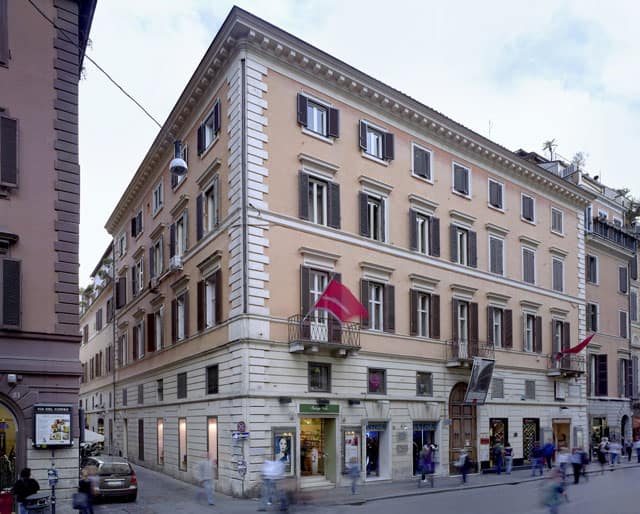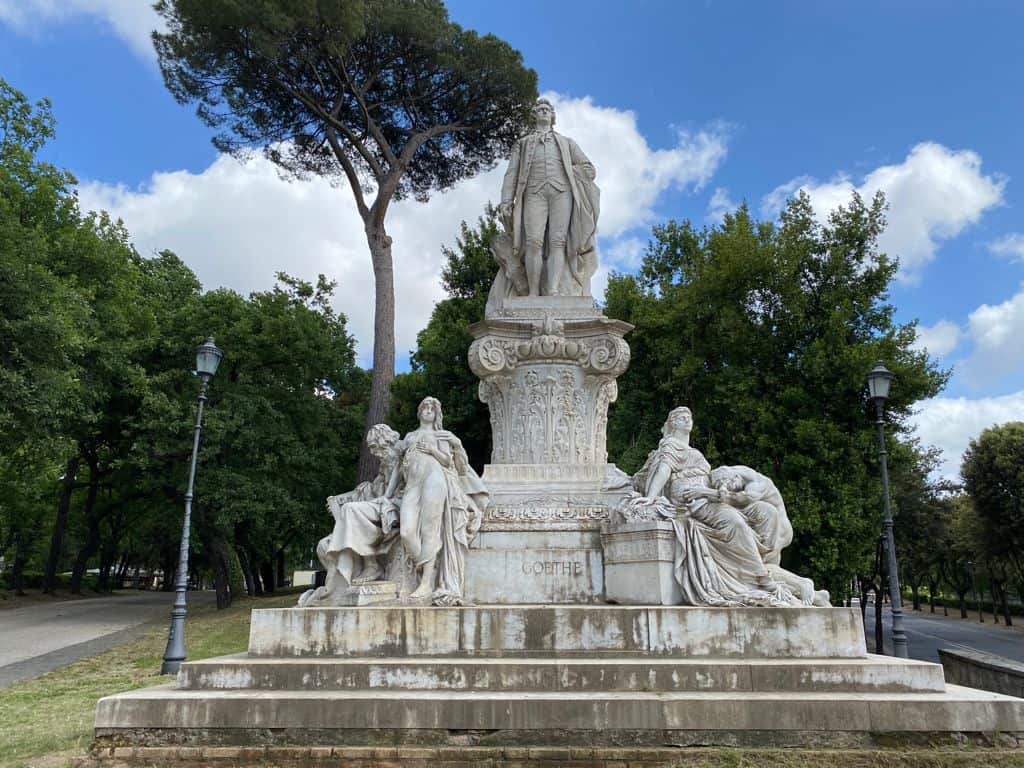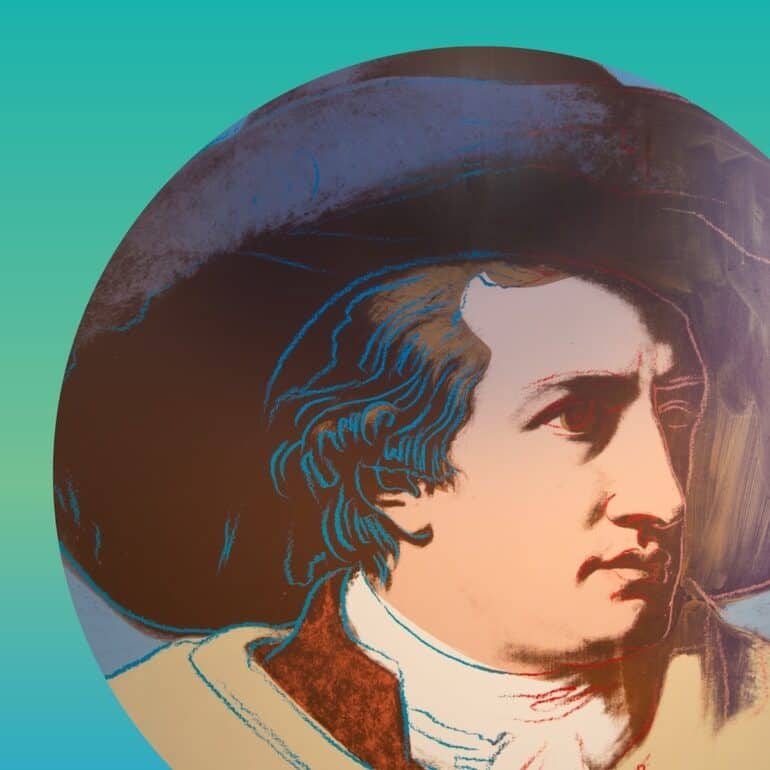The German poet’s Roman awakening
Johann Wolfgang von Goethe, Germany’s most famous literary figure, spent his 86-year-long life searching for love, falling in love, and being in love. His romantic focus is characteristic of the literary era he was part of and also partially what led him to Italy in 1786.
Born in Frankfurt in 1749, Goethe was the son of a wealthy father who encouraged education. Johann Sr. had studied law and wanted his son to follow a similar trajectory. Though the young writer did attend law school, he was never excited about the subject. While pursuing law, he fell in love with an unattainable woman. The experience inspired his first, very popular novel, “The Sorrows of Young Werther.” Though the book brought him literary success, Goethe—a “renaissance man”—continued with other careers and studies, as well as writing. In time, he assumed life as a public servant, acting as a top governmental advisor in Weimar. A few times, he almost went to Italy, but always decided against it.
Many years of paper-pushing took their toll, though. At 37 years old, Goethe made a rather dramatic escape to Italy: leaving without telling his associates and travelling under a fake name.

Casa di Goethe
He made his way from the North to the South of the boot, pausing at length in Rome. “Now at last, I have arrived in the First City of the World!” he wrote. From 1786 to 1788, Goethe lived at Via del Corso, 18. The house is now a museum—the only German museum on foreign soil called la Casa di Goethe. There, Goethe lived with the painter Johann Heinrich Wilhelm Tischbein, whose 1787 portrait “Goethe in the Roman Campagna” remains the most famous depiction of the writer. Visitors of la Casa di Goethe can view the permanent exhibition “Goethe in Italy,” and temporary exhibitions featuring Italian and German ideas. Until April 17, 2022, the museum will display an exhibit about Friedrich Noack, a Roman-German journalist.

Goethe’s Italian Journey
Goethe’s time in Italy was a period of rebirth. The sights and art of Rome awakened him, but its ruins and mysteries were elusive. “Speak, ye stones, I entreat! Oh speak, ye palaces lofty!” he wrote in “The Roman Elegies.”However, Rome’s antiquity was not Goethe’s true source of inspiration. The last line of that same poem refers to his eternal focus: love. “Thou art indeed a world, oh Rome; and yet, were Love absent, / Then would the world be no world, then would e’en Rome be no Rome.”
For Goethe, Rome was a spring of romance. Here, he gained a lust for life (emphasis on lust). His “Elegies” were highly sensual and inspired in part by a new Roman muse, named Faustina in the text. The sexual experiences he had with this woman greatly impacted his writing, leading to his status as Germany’s greatest poet of passion and eroticism. In comparison to “Elegies,” Goethe’s book “The Italian Journey,” also inspired by his travels, was less romantic and more focused on scenery.

In Rome, Goethe fans can also visit the Monumento a Wolfgang Goethe in Villa Borghese, a towering statue of the writer carved by German sculptor Gustav Eberlein. The monument features carvings of various characters in Goethe’s work, including the demon Mephistopheles of the epic “Faust,” whose stone head has been stolen and recovered twice. The monument was placed in Villa Borghese to commemorate the time Goethe spent in its gardens. The poet also recorded visits to San Pietro, Santa Cecilia, and Piramide di Caio Cestio.
When Goethe returned to Weimar in 1788, he did so unenthusiastically. Like countless expatriates from all eras, he had been charmed and engrossed by la dolce vita. Goethe’s Italian experiences re-energized and inspired him, and their effects would impact the rest of his life.






Thank you ! Many know Goethe as the romantic, typical German author and they are rigt ! But Goethe was more, he was also a classical author with love for ancient culture and his caput Mundi was eternal ROMA. Goethe wanted to die there and reach from there the eternal heights:
“You, O hospitable god, will by no means now banish a stranger
From your Olympian heights back to the base earth again.
“Poet, come to your senses!”—Forgive me, Jupiter, is not
Rome’s Capitoline Hill second Olympus to you?
Suffer me, Jupiter, here and let Hermes guide me at last then
Past Cestius’ Tomb gently to Orkus below…”